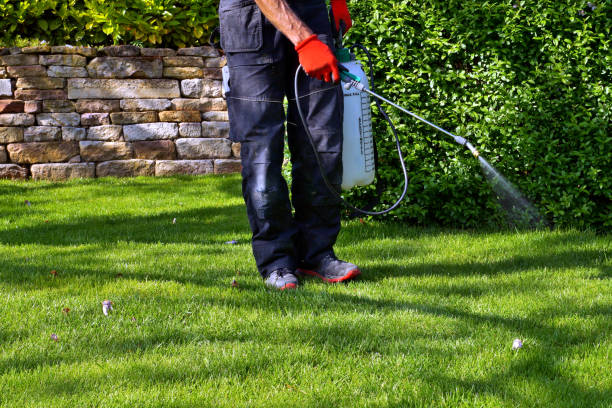Contents
Key Takeaways
- Maintain a strategic landscape to reduce tick habitats.
- Implement natural repellents and regular yard maintenance.
- Consider professional assistance for persistent problems.
- Innovative technology can offer ongoing tick control solutions.
Table of Contents
- Landscape Modifications
- Natural Repellents
- Yard Maintenance
- Chemical Solutions
- Professional Assistance
- Using Technology
Landscape Modifications
Landscape modifications play a crucial role in reducing the presence of ticks in your yard. One of the first steps is to maintain a tidy and well-kept lawn. Regular mowing and trimming of bushes can help reduce areas where ticks may hide. Additionally, eliminating tall grasses, leaf piles, and excessive vegetation along the perimeter of your yard creates an environment that is less inviting to ticks. Keeping these areas clear helps minimize tick habitats and reduces the risk of encounters.
Another crucial change is installing a physical barrier to keep ticks out of your yard. Using gravel or wood chips as a border around gardens and walkways can act as a deterrent. Additionally, placing tick-repellent plants around your property, such as lavender or rosemary, can further reduce tick attraction. If you find tick issues persist despite these changes, consider searching for tick control near me to find local experts who can provide additional solutions.
Natural Repellents
Natural repellents, such as essential oils from cedar, eucalyptus, and lemon, are an eco-friendly alternative to chemical pesticides. These oils can protect garden perimeters and vegetation, while certain plants like lavender, mint, rosemary, and marigolds repel insects like ticks. However, these natural repellents require an integrated pest management plan, as different plants and essential oils have varying effectiveness. Homeowners may need to experiment with combinations of natural deterrents and physical landscape adjustments to develop the most effective approach. A greener approach to pest management benefits personal gardens and contributes positively to broader environmental ecosystems.
Yard Maintenance
Maintaining a clean and orderly yard is essential in deterring tick populations. Leaf litter and overgrown grass provide ideal habitats for ticks, where they can live undetected and easily attach to unsuspecting hosts. Regularly raking leaves, pruning shrubs, and shortening grass disrupt these potential environments. Furthermore, keeping firewood neatly away from the house reduces habitats for ticks and the rodents that often carry them. Consistent outdoor pest control measures, integrated into routine yard maintenance, make it possible to balance a visually appealing space and an uninviting landscape for pests.
Chemical Solutions
Despite vast options in natural deterrents and physical maintenance, sometimes chemical solutions have their place in tick prevention plans. When needed, seeking eco-friendly pesticides to target ticks can provide necessary intervention. However, chemicals should be used sparingly and only by-product guidelines. It’s crucial to avoid wide-spectrum pesticides that can indiscriminately kill beneficial insects, harming the ecosystem. Instead, focus on those labeled for targeted pest control to curb environmental impact.
Professional Assistance
When tick problems persist despite diligent efforts, it may be time to enlist the help of professional pest control services. Professionals can provide targeted interventions and customized solutions tailored to your yard’s needs, including outdoor pest control management. Businesses specializing in this field have the know-how and resources to deal with infestations successfully. Professional interventions help promptly manage infestations and alleviate health risks associated with tick-borne diseases like Lyme disease.
Using Technology
Advancements in technology present new opportunities for the fight against ticks. Automated yard sprayers and motion-activated repellent systems offer sustained, long-term protection by dispensing deterrents in a controlled manner. These systems can be programmed to operate when ticks are most active, providing homeowners with a convenient solution. Incorporating technology reduces manual labor and ensures a constant defense line against ticks. Homeowners may anticipate even more cutting-edge pest management solutions as technology develops, providing valuable and approachable choices for keeping a tick-free environment.
Incorporating these effective strategies into your tick prevention plan allows you to enjoy a safer and more pleasant outdoor space. Prioritizing strategic modifications and consistent yard maintenance, with professional advice and innovative technologies, equips you with the tools necessary to manage tick populations efficiently. Your efforts can lead to a significant reduction in tick populations, ensuring the safety and enjoyment of your yard year-round.




